Sacred myths of ghosts and monsters in Asia are considered scarier than Halloween nightmares that arouse adventurers’ interest. If you yearn to discover your own bravery, you should visit 4 sacred Asian destinations once in a lifetime.
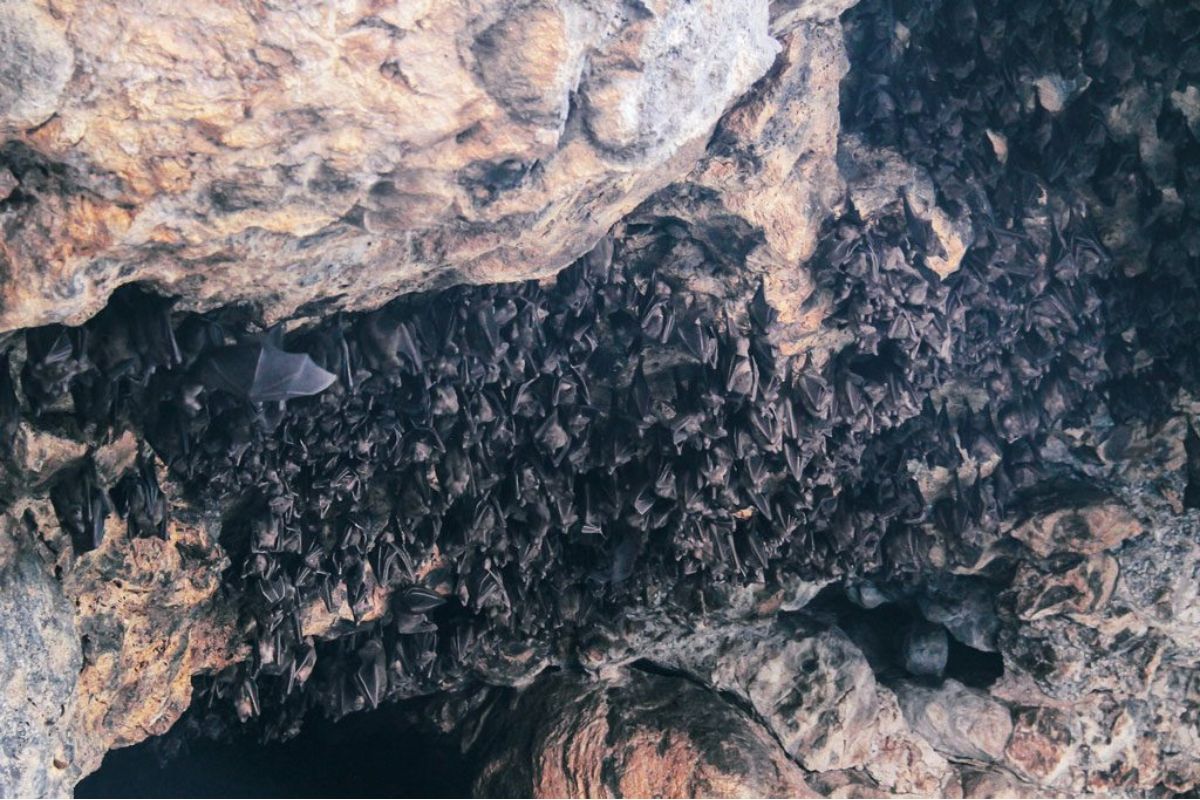
Photo: NOW Bali
When it comes to the end-of-October event, everyone often thinks about costume parties and “trick or treat” games. Halloween progressively becomes a colorful festival with few worries; ghosts appear to be supporting characters. However, the Asian tourist locations listed below that are supposed to be haunted will send chills down travelers’ spines as they approach.
Buddha Park – The city of departed souls:
Buddha Park, known as Xieng Khuan, which means Spirit City, is a sculpture park located in a meadow near the Mekong River, 25 kilometers southeast of Vientiane, Laos. Although it is not a temple, it is known as Wat Xieng Khuan because it has various religious images. As a result of the park’s approximately 200 Hindu and Buddhist statues, the communist government administers Buddha Park as a tourist destination and public park.
According to legend, this sacred garden includes indications that explain the unusual worldview of sculptor Bunleua Sulilat (1932-1996), who created the Buddha Park known as “the city of departed souls.” The owner of the Buddha sculptures is not only a “sculptor wizard,” but he also created his own religion by fusing Buddhism, Hinduism, and shamanism, which drew a large number of followers in the 1970s.
The campus of this mysterious location also has a three-story building corresponding to “heaven”, “earth” and “hell”. The statues in hell exude horror, depicting scenes of torture and punishment, which explains why it is famous as one of the most scary destinations in Asia.
Address: Deua, Thanon Tha, Vientiane, Laos
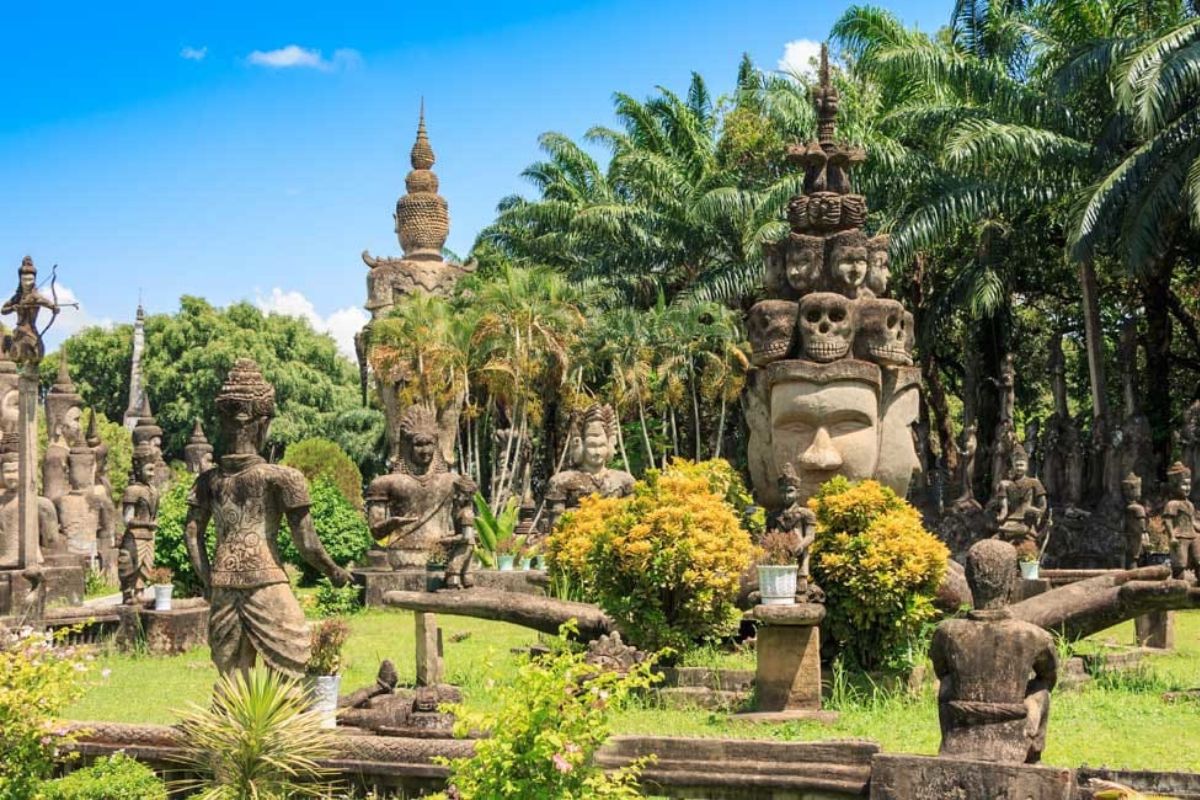
Photo: Rainforest Cruises
Pura Goa Lawah – The temple of bats:
Pura Goa Lawah is well-known as a Balinese Hindu temple, or pura, located in Klungkung, Bali, Indonesia. It has long been considered one of Bali’s Sad Kahyangan Jagad, or “six sanctuaries of the world”. As one of the six holiest places of prayer in Bali, the spiritual location is notable for being built around a cave opening inhabited by bats, hence the name Goa Lawah, or “bat cave.”
According to legend, the bats here are the munchies of a giant snake named Naga Basuki who lives deep within this cave, which stretches all the way to Bali’s mother temple, Besakih Temple, about 20 kilometers distant.
This temple, discovered in 1007 AD, is actually home to thousands of bats in thick density, near to the wall, and while still, they resemble mud statues. However, no one has dared to go inside to confirm the facts. The locals regard this bizarre occurrence as sacred, and they have constructed a temple to guard the cave’s entrance.
Address: Jl. Raya Goa Lawah, Pesinggahan, Kec. Dawan, Kabupaten Klungkung, Bali 80761, Indonesia
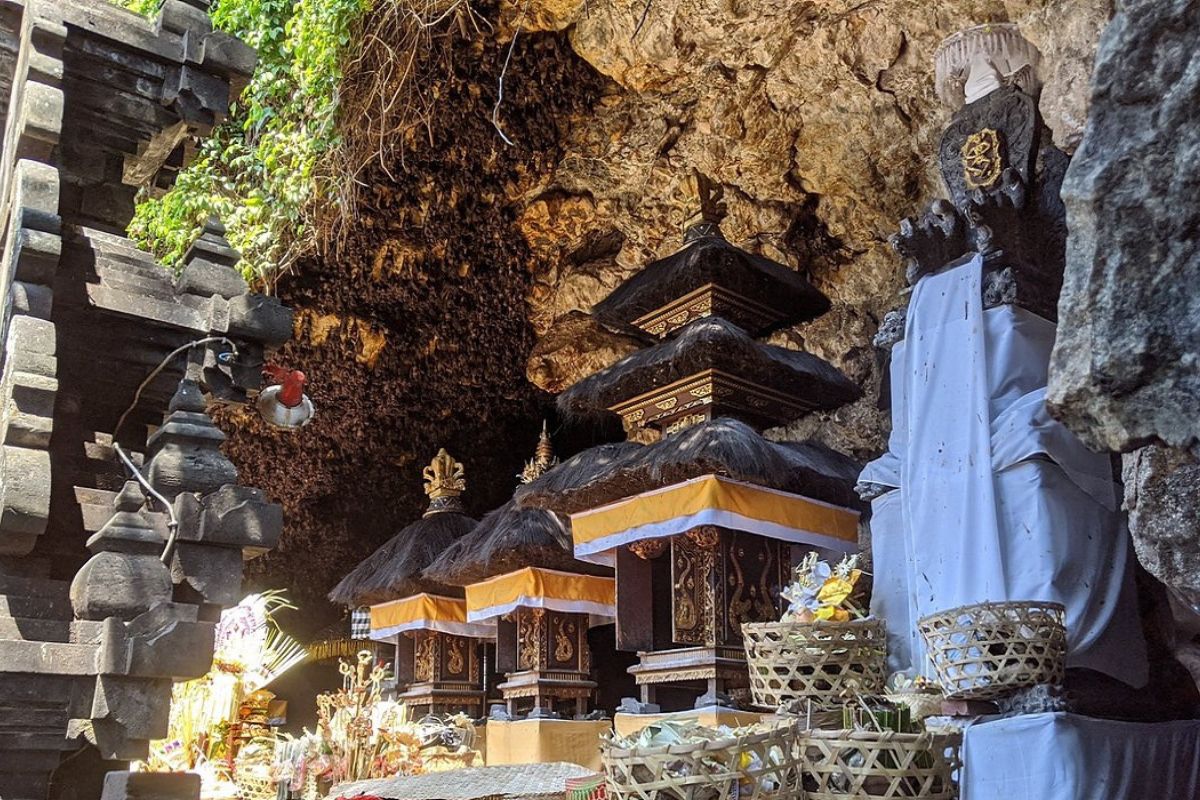
Photo: Bali Golden Tour
Oweynagat Cave – Ireland’s Gate to Hell:
Oweynagat Cave, located in the center of ancient Ireland’s Connaught Kingdom, was a vast mound where herds of sheep wandered freely and grazed. Many centuries ago, the sheep were undoubtedly quivering in agony as they were slaughtered by people dressed in carnival costumes as sacrifices to bad spirits, so here is the horror of ancient Ireland, where the Halloween festival was founded.
Legend has it that the Halloween festival originated in Ireland, at Oweynagat Cave in the town of Roscommon, about 2,000 years ago. According to Irish legend, Oweynagat Cave is the gate between the mortal world and Tir na Nog, where gods and demons reside. The cave is also part of the submerged ruins of Rathcroghan, the largest unexcavated royal capital in Europe.
Address: Rathcave, Co. Roscommon, Ireland
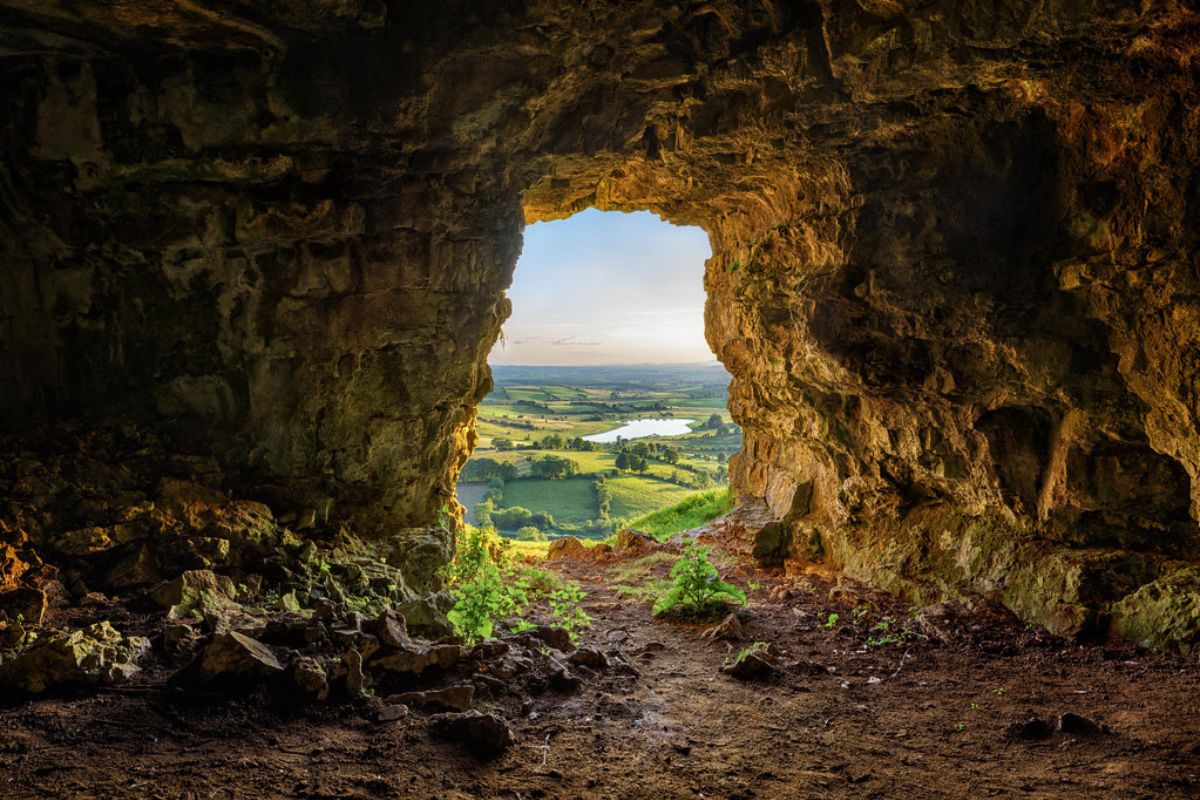
Photo: Flickr
Feroz Shah Kotla – India’s famous haunted fort:
The Feroz Shah Kotla was a fortress built around 1354 by Feroz Shah Tughlaq to house Firozabad, his version of Delhi.
According to local belief, the 14th-century Feroz Shah Kotla fort is inhabited by shape-shifting spirits known as jinn. Jinn is thought to curse Muslims in Arabic folklore. These supernatural beings might manifest as humans, animals, or invisible beings. The Feroz Shah Kotla stronghold was built around 1350 for a Muslim king, and it has since been “haunted” by Jinn. Today, many tourists come to appreciate the wrecked edifice, while others come to pray to Jinn by penning messages or talismans.
Address: Balmiki Basti, Vikram Nagar, New Delhi, Delhi, 110002, India
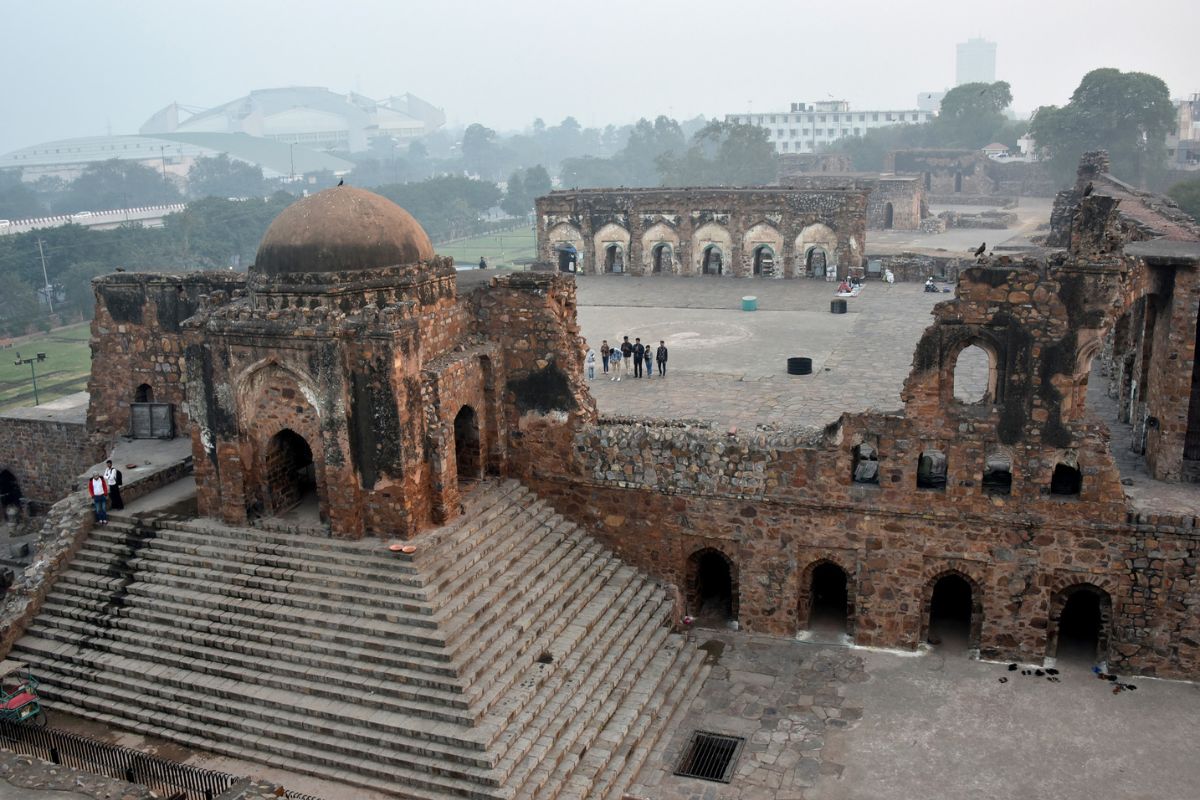
Photo: Story at Every Corner

